-

Effect of geometric design consistency on road safety
Ng, J. C. & Sayed, T.
(2004). ArticleCanadian Journal of Civil Engineering. No.31(2), pp. 218-227
Geometric design consistency is emerging as an important rule in highway design. Identifying and treating any inconsistency on a highway can significantly improve its safety performance. Considerable research has been undertaken to explore this concept including identifying potential consistency measures and developing models to estimate them. However, little work has been carried out to quantify the safety benefits of geometric design consistency. The objectives of this study are to investigate and quantify the relationship between design consistency and road safety. A comprehensive accident and geometric design database of two-lane rural highways is used to investigate the effect of...
Geometric design consistency is emerging as an important rule in highway design. Identifying and treating any inconsistency on a highway can significantly improve its safety performance. Considerable research has been undertaken to explore this concept including identifying potential consistency measures and developing models to estimate them. However, little work has been carried out to quantify the safety benefits of geometric design consistency. The objectives of this study are to investigate and quantify the relationship between design consistency and road safety. A comprehensive accident and geometric design database of two-lane rural highways is used to investigate the effect of several design consistency measures on road safety. Several accident prediction models that incorporate design consistency measures are developed. The generalized linear regression approach is used for model development. The models can be used as a quantitative tool for the evaluation of the impact of design consistency on road safety. An application is presented where the ability of accident prediction models that incorporate design consistency measures is compared with those that rely on geometric design characteristics. It is found that models that explicitly consider design consistency may identify the inconsistencies more effectively and reflect the resulting impacts on safety more accurately than those that do not.Key words: geometric design consistency, road safety, quantification, accident prediction models.
Read more Hide DOI: 10.1139/l03-090 -
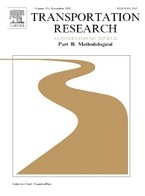
Control of freeway traffic flow by variable speed signs
Smulders, S.
(2002). ArticleTransportation Research Part B: Methodological. No.24(2), pp. 111-132
In this paper a freeway traffic control problem is considered. Control is exerted by means of the variable speed signs of the Dutch Motorway Control and Signalling System. After determining an important effect of the advisory speed signals on driver behaviour, a model for traffic in one section of a freeway is presented and its stability properties are investigated. Based on this model a hysteresis type control policy is proposed that optimizes the throughput of the freeway section and succeeds in postponing congestion. The latter is illustrated by means of a simulation.
-
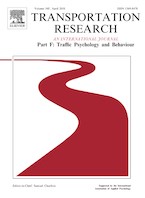
Assessment of drivers' comprehension of traffic signs based on their traffic, personal and social characteristics
Al-Madani, H., & Al-Janahi, A. R.
(2002). ArticleTransportation research part F: Traffic psychology and behaviour. No.5(1), 63-76
The relationship between drivers' personal characteristics and their comprehension of posted signs is investigated in this study. The characteristics considered here include: experience, accident per experience ratio, age, marital status, sex type, nationality, educational background and monthly income. The populations sampled are from Bahrain, Kuwait, Oman, Qatar and United Arab Emirates. A total of 28 posted signs were considered. On an average, drivers comprehended only 56% of the posted signs. Education, monthly income and nationality were related to drivers' comprehension of traffic signs. Western drivers comprehend the signs better than other nationalities. Gulf Cooperation Council...
The relationship between drivers' personal characteristics and their comprehension of posted signs is investigated in this study. The characteristics considered here include: experience, accident per experience ratio, age, marital status, sex type, nationality, educational background and monthly income. The populations sampled are from Bahrain, Kuwait, Oman, Qatar and United Arab Emirates. A total of 28 posted signs were considered. On an average, drivers comprehended only 56% of the posted signs. Education, monthly income and nationality were related to drivers' comprehension of traffic signs. Western drivers comprehend the signs better than other nationalities. Gulf Cooperation Council States and Arab drivers comprehended the signs less well. Male drivers scored higher than female ones. Age, marital status, experience and accident rates had no effect on drivers comprehension of signs. The results raise serious questions about the applicability of the signing system worldwide. The results indicate that drivers' personal characteristics are primarily associated with their understanding capabilities and not with their accident involvement rates. These findings are believed to be important for the designers of road signs. They are also important for the decision makers for proper allocation of resources in the field of traffic education.
Read more Hide DOI: 10.1016/S1369-8478(02)00006-2 -
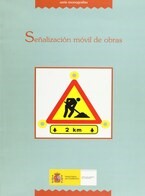
Señalización móvil de obras
España. Ministerio de Fomento.
(1997). LlibreTechnical document that takes as its bases the disposition of Roads’ Norm 8.3- IC (to be applied in case of fixed works), in which the disposition to be taken in case of mobile work signaling are explained, since, due to their features, they need specific treatment.
-
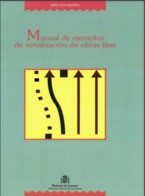
Manual de ejemplos de señalización de obras fijas
España. Ministerio de Fomento. Dirección General de Carreteras.
(1997). LlibreManual de ejemplos de señalización de obras fijas.
Technical document whose purpose is to facilitate the application of Roads’ Norm 8.3-IC, which contemplates a series of practical exercises, following the guidelines and specificities mentioned in such Norm. These can be useful for those in charge of works when conducting the signaling in each one of the considered cases, following what indicated in the examples
-

Señalización de obras. Norma de Carreteras 8.3-IC
España. Ministerio de Obras Públicas, Transportes y Medio Ambiente
(1994). LlibreSeñalización de obras. Norma de Carreteras 8.3-IC.
Normative, technical document on the signaling, lighting and, if needed, defense of fixed works outside town that affect free circulation on the country’s road network. This institution develops the measures that shall be adapted to each occasion, in order to signal the works that are being conducted on roads, and that somehow make free vehicle circulation difficult. Other included measures are related to speed limits, closure of lanes and deviations to temporary lanes, including a catalogue of the signaling, lighting and defense elements that may be employed in said works signaling
-
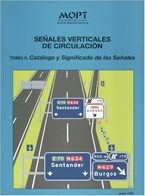
Señales verticales de circulación. Tomo II. Catálogo y significado de las señales
España. Ministerio de Obras Públicas y Transportes
(1992). LlibreSeñales verticales de circulación. Tomo II. Catálogo y significado de las señales.
Normative, technical document, in which a catalogue of vertical circulation signs is listed, identifying each one of them depending on their type, naming them and their legal meaning in the current legislation (Law on Traffic, Circulation of Motor Vehicles and Road Safety; General Regulation of Circulation, among others).
-
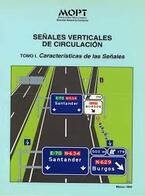
Señales verticales de circulación. Tomo I. Características de las señales
España. Ministerio de Obras Públicas y Transportes
(1992). LlibreSeñales verticales de circulación. Tomo I. Características de las señales.
Normative, technical document, in which the characteristics of every sign are gathered practically and precisely. This refers to their size, proportions, colors, design and used symbols. This publication arose as a consequence of the progressive introduction of new signs throughout time, as well as from the need of introducing some changes and additions derived from the update of certain signaling criteria. It also came from other modifications that gathered the changes necessary for unifying Spanish signals following the different European agreements, conventions, and recommendations on road signs.
-
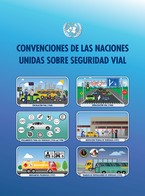
Convención sobre la Señalización Vial, Viena
Comisión Económica de las Naciones Unidas para Europa (UNECE)
(1968). LlibreConvención sobre la Señalización Vial, Viena.
Multilateral agreement redacted by the Economic and Social Council of the United Nations during its conference on Road Traffic in Vienna from October 7th to November 8th, 1968, with the aim of unifying international signs, symbols, and markings. This had the objective of facilitating the international circulation on public roads by land, as well as increasing the safety of such roads. The convention, which, as for August 2016, had been signed by 69 countries, Spain being one of them, establishes the criteria of classification, shape, color, size, and symbols, which are essential in vertical traffic signs, but also some dispositions on road markings and traffic lights.






